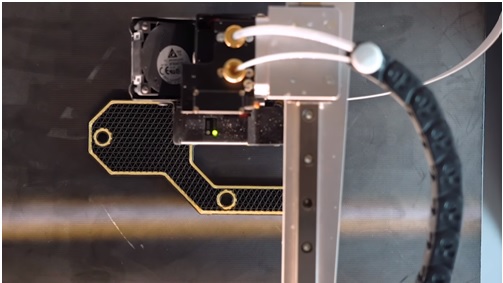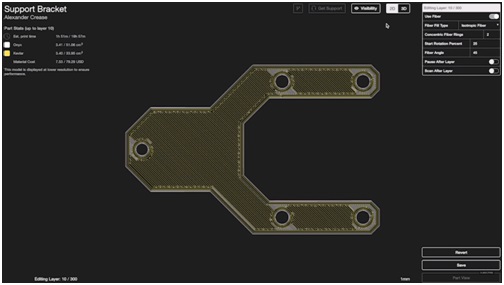Technologies That are Making Composite 3D Printing Possible
Composite materials are lighter and stronger hence have high strength-to-weight ratio finding applications to replace traditional parts in automotive and aerospace industries. Composite materials have been in existence for a long time but they have been manufactured by means primarily in mass production setups. Composite printing is still in the beginning phase of adoption that is restricted to industries but soon we will be seeing plenty of composite 3D printed parts replacing parts printed with conventional materials and experts predict that the market cap for composite 3D printing could reach $10 Billion by 2028, as it combines both the advantages of composites and rapidly producing parts that are tailored for highest strength while being extremely light in weight. Composites enable not just the high strength to weight ratio alone, but further developments enable for enhancing other properties like electrical conductivity, high temperature resistance, chemical resistance, flexibility and durability. Before going into the details of how they are printed, let’s have a look at little background on composites.
What are Composites?
As the name suggests, composite material has 2 constituents, the Matrix and the Reinforcement. Matrix is the base material that fills in the most portion of the geometry while reinforcement is a supplement whose job is to enhance the properties of the base matrix, primarily the strength. A point to note is that both matrix and reinforcement do not mix homogeneously (such as in alloys or blends) rather exist independently in the part geometry thus is the distinction between an alloy and a composite. Composites can be classified based on material of the matrix (polymer, metal or ceramic) and what form of reinforcement is given to it (particle, flake, fibres, laminates).
Types of 3D Printable Composites
So far companies have achieved to print nylon polymer based composites that are reinforced with fibres like carbon fibre, kevlar and glass fibres. And depending on how the fibre is embedded in the matrix, they are further classified as Continuous Fibre Composites and Chopped Fibre Composites. In Chopped Fibre Composite, the reinforcing fibre is chopped and mixed with the base matrix and printed as a single material. In Continuous Fibre Composite, the reinforcing fibre is laid as a continuous strand at desired locations using a separate print head. Parts printed in continuous fibre have significantly better properties than chopped fibre.
Technologies for printing Chopped Fibre composites:
Fused Deposition Modeling: Filaments made out of chopped fibre composites can be printed in Fused Deposition Modeling machines. However, the printer has to support specialized nozzles and print extrusion units so that nozzle abrasion does not take place and also the heating unit is capable of melting composites. Ultimaker has released its Red CC Print Core for S5 printer and has certified selected third party composite filaments that work with their printers. Markforged has also pioneered printing of Onyx (Proprietary composite of Nylon + chopped carbon fibre).
Selective Laser Sintering: Powders made out of chopped fibre composites can be printed with Selective Laser Sintering. EOS has released Nylon powder reinforced with glass beads that are printable with their SLS printers.
Technologies for printing Continuous Fibre composites:
This is an emerging area and companies like Markforged, Desktop Metal and Anisoprint have pioneered their own techniques that resemble a dual-mode Fused Deposition Printing to print continuous fibres of reinforcement materials with a separate print head alongside the primary print head that prints the matrix. Markforged uses fibre in wire spool form calling it as Continuous Fibre Fabrication (CFF) while Desktop Metal uses reinforcement fibres in tape form calling it as Micro Automated Fiber Placement (μAFP).

Image shows CFF printing in action on Markforged Printer. Black Matrix being a Nylon mased polymer while Amber coloured outline being Kevlar Fibres.

Image shows Markforged Proprietary Eiger software allows for optimal placement of fibres with specific
settings for added strength.
Parts printed in CFF can reach strengths of aluminum parts, thus offering an excellent alternative to replace aluminum parts that are made with traditional manufacturing methods.